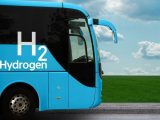
Hyseas III project to bring first hydrogen fuel cell sea ferry to Europe
October 26, 2021The project will benefit the area by providing clean transportation and using renewable energy.
The Hyseas III project is a Scottish-led project that involves the use of the first hydrogen fuel cell sea ferry in Europe, and it will be powered by renewable H2 for a substantially reduced carbon footprint.
Several organizations have come together to participate in the progress of the Hyseas III.
Among those participants in the hydrogen fuel cell sea ferry include St. Andrew’s University, Caledonian Maritime Assets (CMAL), the Orkney Islands Council, in addition to a number of European organizations. Hyseas first stated in 2013, at which time its goal was to research and develop vessels powered by H2. The first two phases of the project were focused specifically on demonstrating that the technology could be effectively integrated with maritime hybrid-electric drivetrains. This was on top of the development and demonstration of hydrogen storage and bunkering solutions.
A recent Auto Evolution report, the United Kingdom’s largest producer of greenhouse gases is maritime transportation. That said, the region most likely to use this type of transportation also has considerable access to wind and tidal power. In Scotland’s Orkney Islands for instance, the region is already using wind, tide and wave energy to generate power. However, due to the limited connected to the electricity grid on land, excess renewable energy generated using these methods cannot be exported for use.

Therefore, the region looked to other solutions to use the excess energy, landing on H2 production. From there, the H2 could be stored under pressure and used as needed to power local marine transport, such as the ferry fleet.
The developers recently unveiled the green hydrogen fuel cell sea ferry’s design.
The sea-going ferry was designed by the AqualisBraemar LOC Group. It will have the capacity for transporting up to 120 passengers, 16 cars and two trucks at a time. The ferry’s initial route will be in Orkney between Kirkwall and Shapinsay. That said, the intention is to broaden its operating areas to include other ports as well, once they also start H2 production. Tests are currently underway in Bergen, Norway, to ensure that the hydrogen fuel cell and battery system will meet the requirements of the new marine vessel.



 With over 15 years of reporting hydrogen news, we are your premier source for the latest updates and insights in hydrogen and renewable energy.
With over 15 years of reporting hydrogen news, we are your premier source for the latest updates and insights in hydrogen and renewable energy.